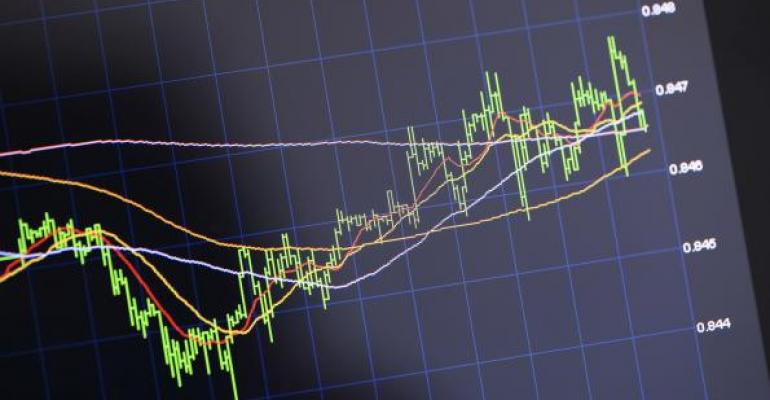It’s a great time to be a stock picker. Why’s that? Because a couple of indicators are signaling the market’s comfort with alpha hunting.
Alpha, as you may know, is the idiosyncratic component of an investment’s return that’s not explained by the broad market. In other words, it’s the uncorrelated part.
Market correlation has been on a downtrend since February, at least as measured by the CBOE S&P 500 Correlation Index (KCJ). KCJ uses options to estimate the average correlation among the 50 largest stocks in the S&P 500 Index, so the current downtrend indicates a widening disconnect between individual stocks and the broad market (see the red line in the chart below).
When you’re building a portfolio, low correlations contribute to greater diversification. That’s a good thing. From a macro perspective, correlation tends to increase in times of market stress and wanes as anxiety is allayed.
Put the falling correlation together with a persistently low CBOE Volatility Index (VIX) and you get the distinct impression savvy traders have been expecting to pluck diverse returns from a rather placid equity market. VIX, often referred to as the market’s “fear index,” relies on option prices to reveal the consensus view of near-term stock volatility. VIX is the black line in the chart below. Notice how flat it’s become?

In times like these, active management can shine. Emphasis on the word can. Alpha’s a very elusive commodity. Well, more accurately positive alpha’s hard to capture. There always seems to be plenty of negative alpha around.
Back in December, we examined ten ETFs with the highest, most positive, alpha (“How Good Are Active ETFs?”). One fund, the AdvisorShares TrimTabs Flat Shrink ETF (NYSE Arca: TTFS), was most tightly correlated with its benchmark ETF, the iShares Russell 3000 ETF (NYSE Arca: IWV). Over the three-year period studied, TTFS earned an r-squared coefficient of 86, yet scored the second-highest active alpha of the lot.
And now? In 2016’s first semester, the TrimTabs portfolio’s outperformance has quickened. TTFS has notched a year-to-date gain of 4.2 percent while IWV’s share price has appreciated just 3.5 percent.
There must be something to this alpha business.
A cautionary note: The correlation index, just like the fear index, is cyclical. The red downtrend will someday reverse. It’s then that beta will be ascendant.
Brad Zigler is WealthManagement's Alternative Investments Editor. Previously, he was the head of Marketing, Research and Education for the Pacific Exchange's (now NYSE Arca) option market and the iShares complex of exchange traded funds.





